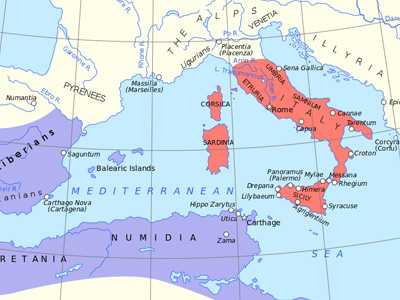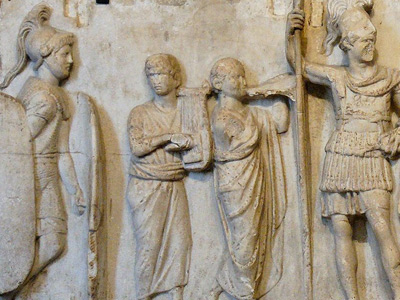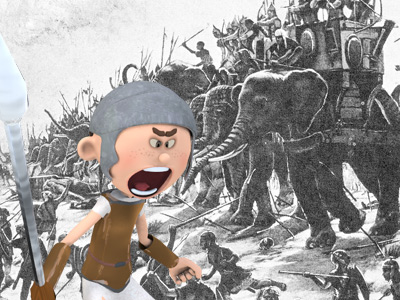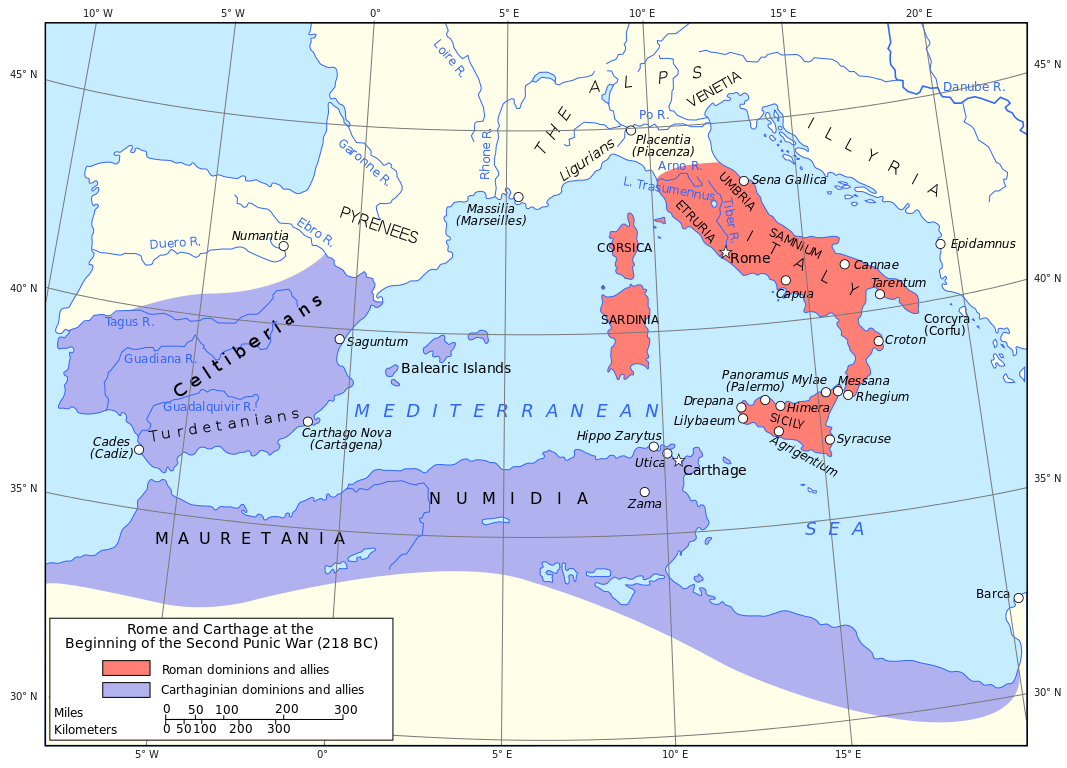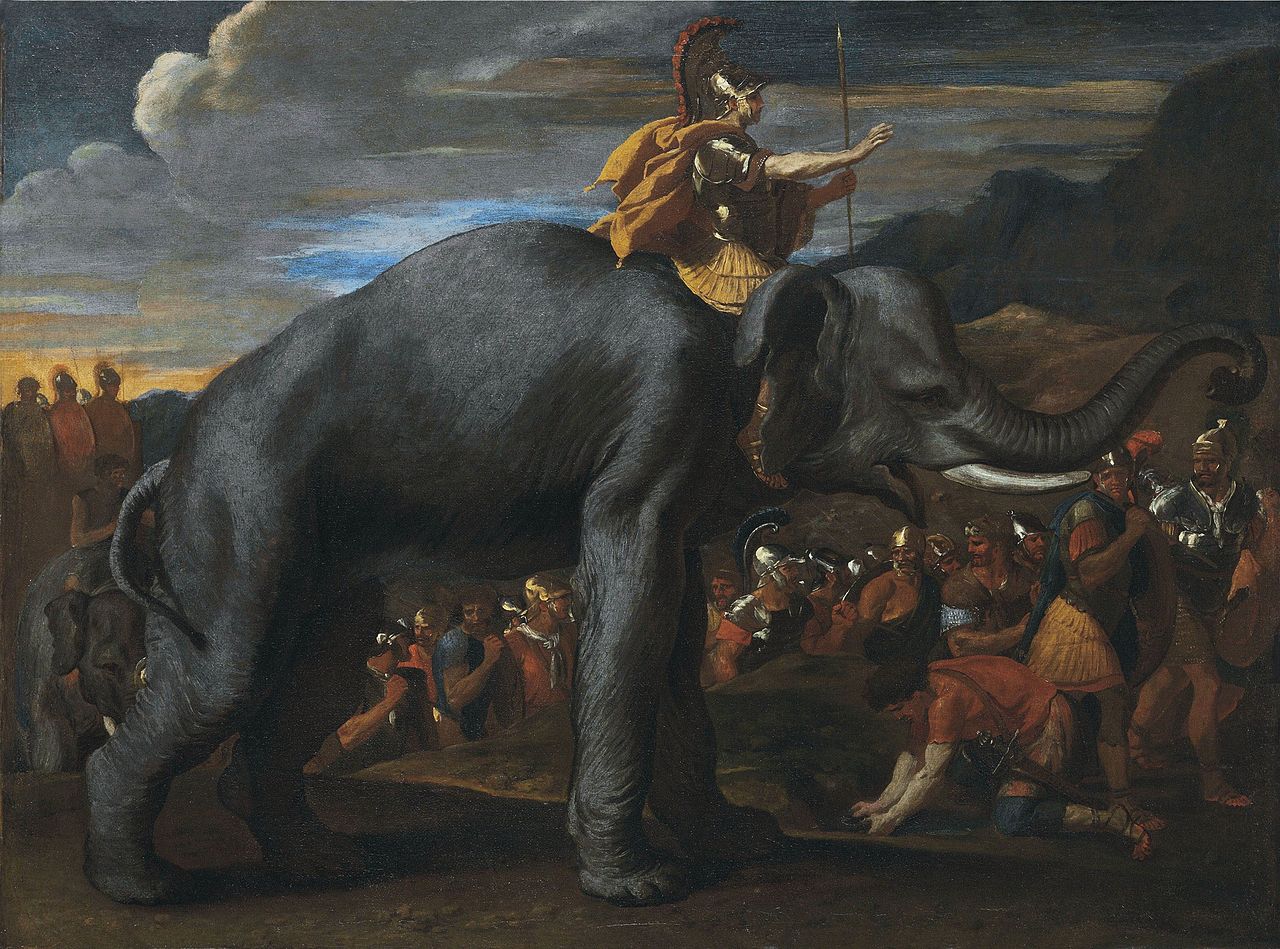Second Punic War (218-201 BC)
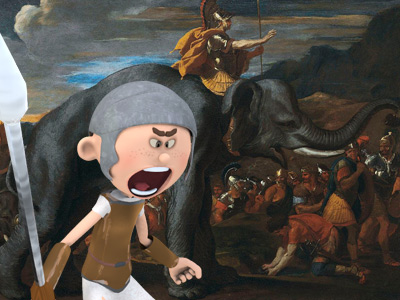
Climax and Fall of Hannibal's Alliance
The climax of Carthaginian expansion was reached when the largest Greek city in Italy, Tarentum, switched sides in 212 BC. The Battle of Tarentum (212 BC) was a carefully planned coup by Hannibal and members of the city's democratic faction. There were two separate successful assaults on the gates of the city. This enabled the Carthaginian army, which had approached unobserved behind a screen of marauding Numidian horsemen, to enter the city by surprise and take all but the citadel where the Romans The Roman Republic was a form of government of Rome and the era of the classical Roman civilization when it was run through public representation of the Roman people. Beginning with the overthrow of the Roman Kingdom (traditionally dated to 509 BC) and ending in 27 BC with the establishment of the Roman Empire, Rome's control rapidly expanded during this period - from the city's immediate surroundings to hegemony over the entire Mediterranean world. and their supporting faction were able to rally. The Carthaginians failed to take the citadel, but subsequent fortifications around this Roman stronghold put the city under Carthaginian control. However, the harbour was blocked and warships had to be transported overland to be launched at sea.
The Roman Republic was a form of government of Rome and the era of the classical Roman civilization when it was run through public representation of the Roman people. Beginning with the overthrow of the Roman Kingdom (traditionally dated to 509 BC) and ending in 27 BC with the establishment of the Roman Empire, Rome's control rapidly expanded during this period - from the city's immediate surroundings to hegemony over the entire Mediterranean world. and their supporting faction were able to rally. The Carthaginians failed to take the citadel, but subsequent fortifications around this Roman stronghold put the city under Carthaginian control. However, the harbour was blocked and warships had to be transported overland to be launched at sea.
The Battle of Capua (212 BC) was a stalemate. The Romans decided to end the siege of Capua. As a result, the Capuan cavalry was reinforced with half of the available Numidian cavalry of 2,000.
In the Battle of Beneventum (212 BC), Hanno the Elder was again defeated, this time by Quintus Fulvius Flaccus, who also captured his camp. In the following Battle of the Silarus, in the same year, the Romans under Marcus Centenius were ambushed and lost all but 1,000 of their 16,000 effectives. Also, in 212 BC, the Battle of Herdonia resulted in another Roman defeat, with only 2,000 Romans out of a force of 18,000 surviving a direct attack by Hannibal's numerically superior forces, combined with an ambush that cut off the Roman line of retreat.
This phase of the war was marked by the fall of major and minor cities to the Romans, although Hannibal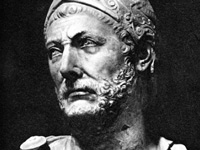 Hannibal Barca (247-183 BC), was a Carthaginian general, considered one of the greatest military commanders in history. Hannibal lived during a period of great tension in the western Mediterranean Basin, when the Roman Republic established its supremacy over other great powers such as ancient Carthage. One of his most famous achievements was at the outbreak of the Second Punic War, when he marched an army which included war elephants from Iberia over the Pyrenees and the Alps into Italy. Hannibal Barca » was still able to prevail on the battlefield and thus lift some sieges. The Siege of Syracuse, from 214 BC onwards, was marked by Archimedes' ingenuity in inventing war machines that made it impossible for the Romans to make any gains with traditional methods of siege warfare. A Carthaginian army of 20,000 had been sent to relieve the city, but suffered more heavily than the Romans from pestilence and was thus forced to retreat to Agrigentum. The fall of Syracuse was finally achieved by the treachery of a Syracusan pro-Roman faction, that allowed the Romans to enter the city, resulting in the death of Archimedes.
Hannibal Barca (247-183 BC), was a Carthaginian general, considered one of the greatest military commanders in history. Hannibal lived during a period of great tension in the western Mediterranean Basin, when the Roman Republic established its supremacy over other great powers such as ancient Carthage. One of his most famous achievements was at the outbreak of the Second Punic War, when he marched an army which included war elephants from Iberia over the Pyrenees and the Alps into Italy. Hannibal Barca » was still able to prevail on the battlefield and thus lift some sieges. The Siege of Syracuse, from 214 BC onwards, was marked by Archimedes' ingenuity in inventing war machines that made it impossible for the Romans to make any gains with traditional methods of siege warfare. A Carthaginian army of 20,000 had been sent to relieve the city, but suffered more heavily than the Romans from pestilence and was thus forced to retreat to Agrigentum. The fall of Syracuse was finally achieved by the treachery of a Syracusan pro-Roman faction, that allowed the Romans to enter the city, resulting in the death of Archimedes.
In a second Battle of Capua (211 BC), Hannibal again tried to regain use of his main harbour as in the previous year, by luring the Romans into a pitched battle. He was unsuccessful, and was also unable to lift the siege by assaulting the besiegers' defences. So he tried a strategem of staging a march towards Rome, hoping in this way to compel the enemy to abandon the siege and rush to defend their home city. However, only part of the besieging force left for Rome and, under continued siege, Capua fell to Rome soon afterwards. Near Rome he fought another pitched battle.
The first Battle of Herdonia (210 BC) was fought to lift the Roman siege of that allied city. Hannibal caught the proconsul Gnaeus Fulvius Centumalus off guard during his siege of Herdonia and destroyed his army in a pitched battle with up to 13,000 Romans dead of 20,000. The defection of the allied city of Salapia in Apulia in 210 BC was achieved by treachery: the inhabitants massacred the Numidian garrison and went over to the Romans.
In 210 BC, the Battle of Numistro between Marcellus and Hannibal was inconclusive, but the Romans stayed on his heels until the also inconclusive Battle of Canusium in 209 BC. In the meantime, this battle enabled another Roman army under Fabius to approach Tarentum and take it by treachery in the second Battle of Tarentum (209 BC). Hannibal, at that time, had been able to disengage from Marcellus and was only 8.0 km (5 mi) away when the city, under the command of Carthalo, who was bound to Fabius by an agreement of hospitality, fell.
Related Articles
First Punic War (264-241 BC)
The first of three wars fought between Ancient Carthage and the Roman Republic. For more than 20 years, the two powers struggled for supremacy, primarily on the Mediterranean island of Sicily and its surrounding waters, and also in North Africa. View First Punic War (264-241 BC) »
Second Punic War (218-201 BC)
The Second Punic War, also referred to as The Hannibalic War and (by the Romans) the War Against Hannibal, lasted from 218 to 201 BC and involved combatants in the western and eastern Mediterranean. View Second Punic War (218-201 BC) »
Third Punic War (149–146 BC)
Was the third and last of the Punic Wars fought between the former Phoenician colony of Carthage and the Roman Republic. This war was a much smaller engagement than the two previous Punic Wars and focused on Tunisia. View Third Punic War (149–146 BC) »
HISTORY
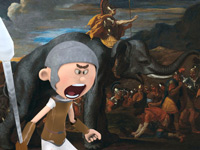
RESOURCES
This article uses material from the Wikipedia article "Second Punic War", which is released under the Creative Commons Attribution-Share-Alike License 3.0.
© Stories Preschool. All Rights Reserved.
